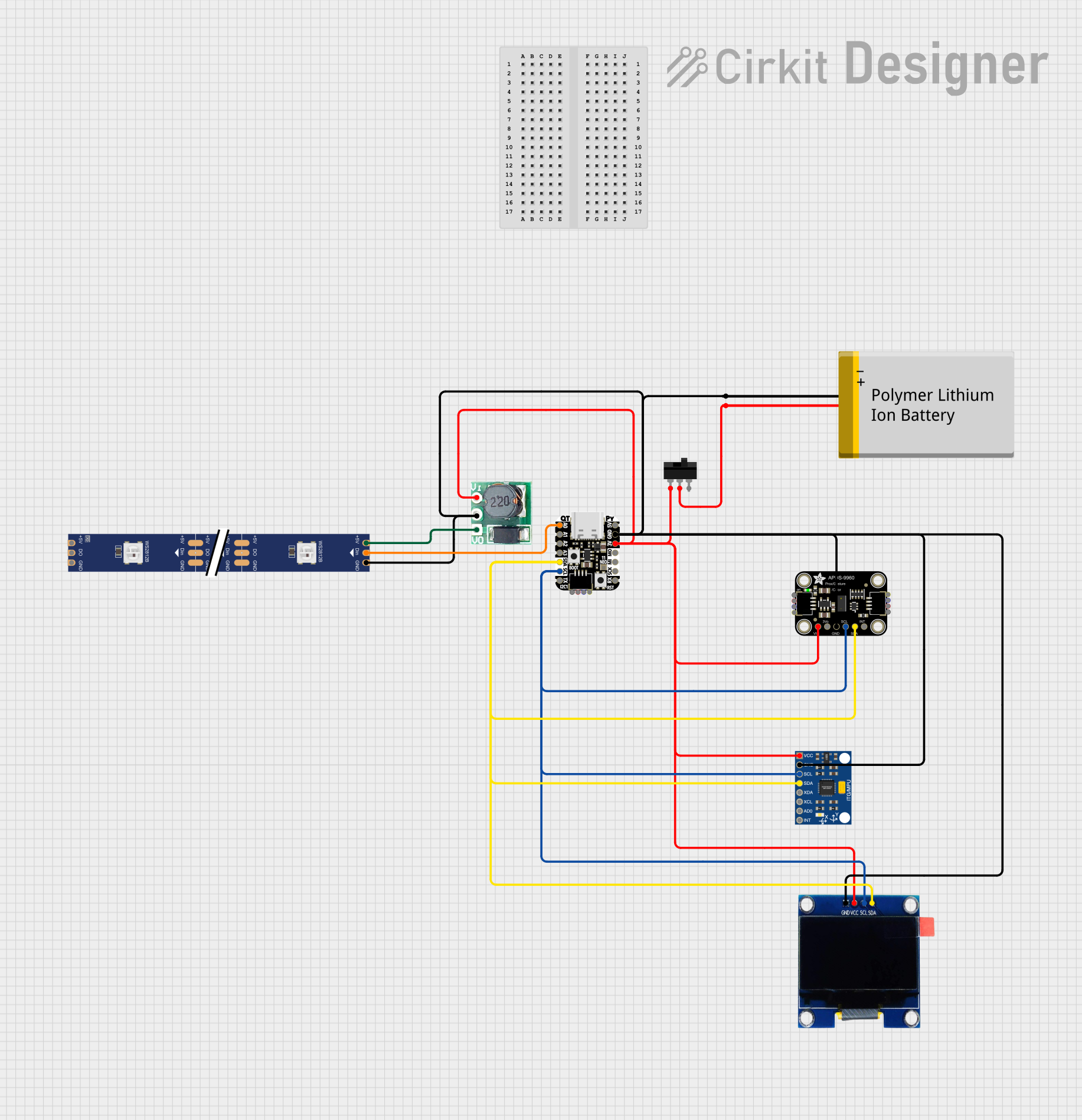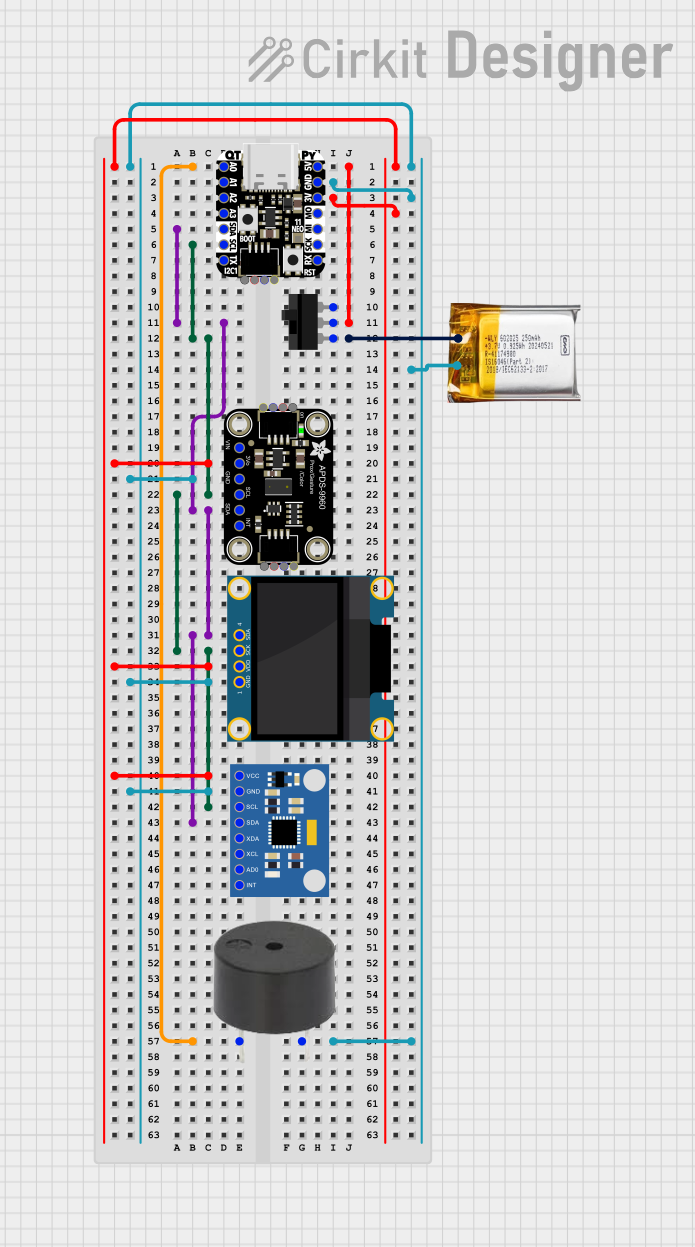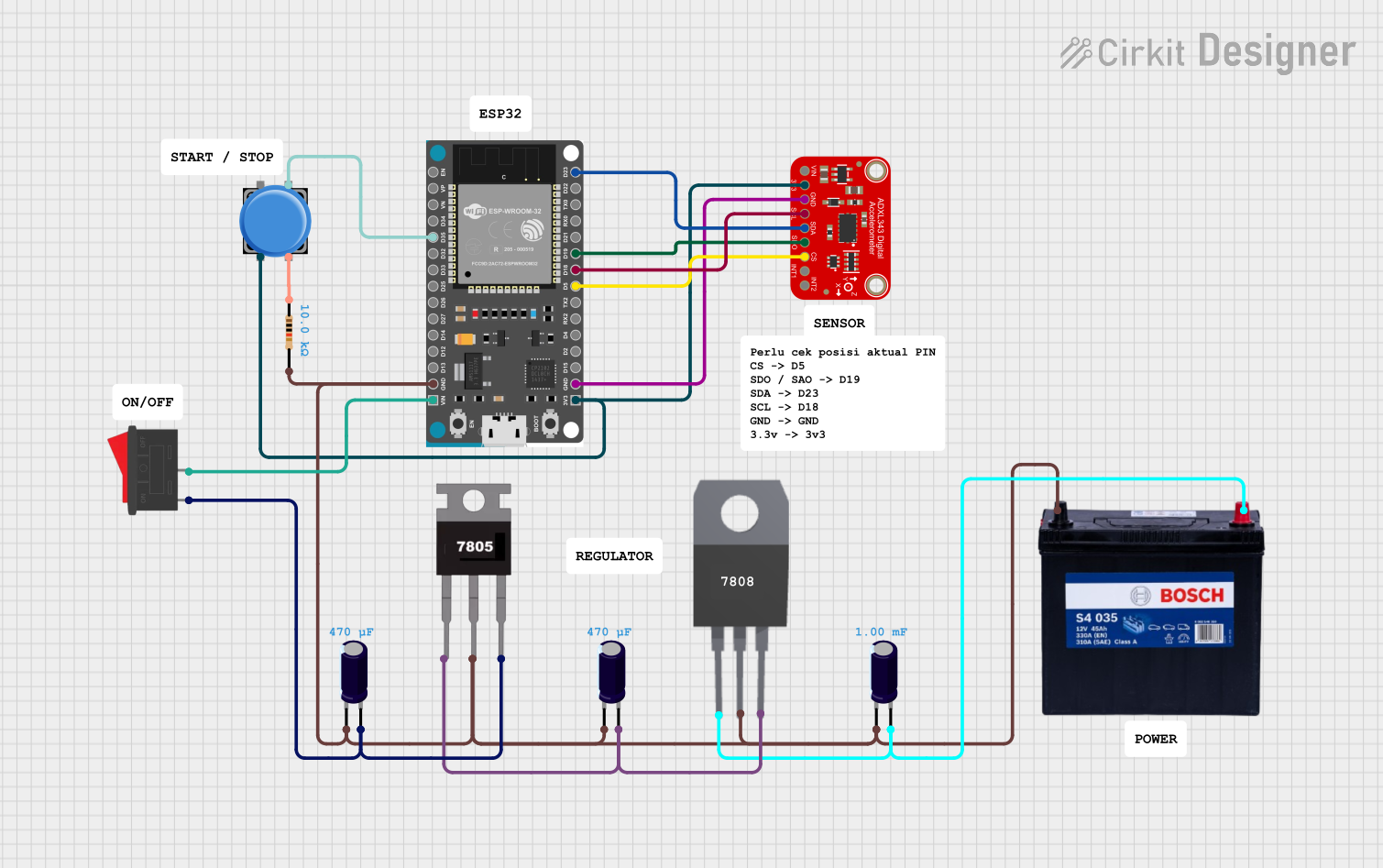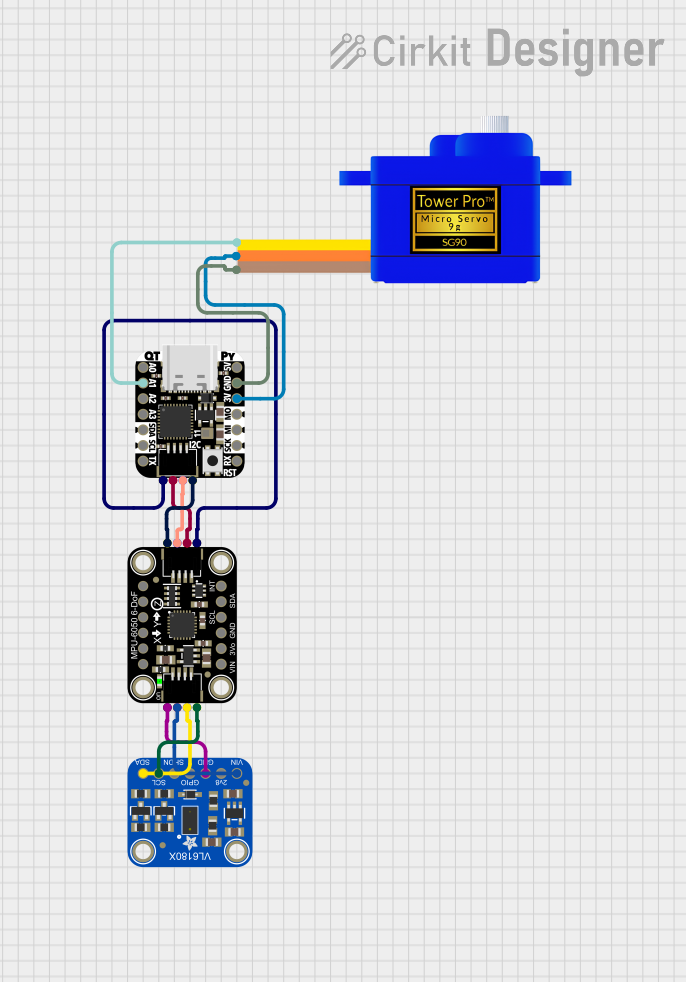
How to Use SparkFun Qwiic Adapter: Examples, Pinouts, and Specs

 Design with SparkFun Qwiic Adapter in Cirkit Designer
Design with SparkFun Qwiic Adapter in Cirkit DesignerIntroduction
The SparkFun Qwiic Adapter (Manufacturer Part ID: Dev-14495) is a versatile breakout board designed to simplify the connection of Qwiic-enabled I2C devices to microcontrollers or other development boards. It features a compact design with two Qwiic connectors and standard 0.1-inch spaced pins, making it ideal for rapid prototyping and development.
The Qwiic Adapter eliminates the need for soldering or complex wiring, allowing users to quickly integrate I2C devices into their projects. It is particularly useful for applications involving sensors, displays, and other peripherals that communicate via the I2C protocol.
Explore Projects Built with SparkFun Qwiic Adapter

 Open Project in Cirkit Designer
Open Project in Cirkit Designer
 Open Project in Cirkit Designer
Open Project in Cirkit Designer
 Open Project in Cirkit Designer
Open Project in Cirkit Designer
 Open Project in Cirkit Designer
Open Project in Cirkit DesignerExplore Projects Built with SparkFun Qwiic Adapter

 Open Project in Cirkit Designer
Open Project in Cirkit Designer
 Open Project in Cirkit Designer
Open Project in Cirkit Designer
 Open Project in Cirkit Designer
Open Project in Cirkit Designer
 Open Project in Cirkit Designer
Open Project in Cirkit DesignerCommon Applications
- Rapid prototyping of I2C-based systems
- Connecting Qwiic-enabled sensors and modules to microcontrollers
- Educational projects and workshops
- IoT devices and embedded systems development
Technical Specifications
The following table outlines the key technical details of the SparkFun Qwiic Adapter:
| Parameter | Specification |
|---|---|
| Manufacturer | SparkFun Electronics |
| Part Number | Dev-14495 |
| Operating Voltage | 3.3V to 5V |
| Communication Protocol | I2C |
| Connector Type | Qwiic (JST 4-pin) and 0.1-inch header pins |
| Dimensions | 0.75" x 0.75" (19.05mm x 19.05mm) |
Pin Configuration and Descriptions
The SparkFun Qwiic Adapter features two Qwiic connectors and a set of 0.1-inch header pins. The pin configuration is as follows:
| Pin Name | Description |
|---|---|
| GND | Ground connection |
| VCC | Power supply input (3.3V or 5V) |
| SDA | I2C data line |
| SCL | I2C clock line |
Usage Instructions
Connecting the Qwiic Adapter
- Power Supply: Connect the VCC pin to a 3.3V or 5V power source, depending on the requirements of your Qwiic-enabled device. Connect the GND pin to the ground of your microcontroller or power supply.
- I2C Lines: Connect the SDA and SCL pins of the adapter to the corresponding I2C pins on your microcontroller.
- Qwiic Devices: Plug your Qwiic-enabled device(s) into one of the Qwiic connectors on the adapter. The Qwiic system allows for daisy-chaining multiple devices.
Example: Using the Qwiic Adapter with an Arduino UNO
The following example demonstrates how to connect a Qwiic-enabled temperature sensor to an Arduino UNO using the SparkFun Qwiic Adapter.
Hardware Setup
- Connect the VCC and GND pins of the Qwiic Adapter to the 5V and GND pins of the Arduino UNO, respectively.
- Connect the SDA and SCL pins of the Qwiic Adapter to the A4 and A5 pins of the Arduino UNO (I2C pins for the UNO).
- Plug the Qwiic-enabled temperature sensor into one of the Qwiic connectors on the adapter.
Example Code
#include <Wire.h>
#include <SparkFun_Temperature_Sensor.h> // Include the library for your Qwiic sensor
// Create an instance of the temperature sensor
QwiicTemperatureSensor tempSensor;
void setup() {
Wire.begin(); // Initialize I2C communication
Serial.begin(9600); // Start serial communication for debugging
// Initialize the temperature sensor
if (!tempSensor.begin()) {
Serial.println("Error: Temperature sensor not detected. Check connections.");
while (1); // Halt execution if the sensor is not found
}
Serial.println("Temperature sensor initialized successfully.");
}
void loop() {
// Read the temperature in Celsius
float temperature = tempSensor.getTemperatureC();
// Print the temperature to the Serial Monitor
Serial.print("Temperature: ");
Serial.print(temperature);
Serial.println(" °C");
delay(1000); // Wait for 1 second before the next reading
}
Best Practices
- Ensure that the power supply voltage matches the requirements of your Qwiic-enabled device.
- Use short, high-quality cables to minimize noise on the I2C lines.
- Avoid connecting devices with conflicting I2C addresses. If necessary, modify the address of one of the devices.
Troubleshooting and FAQs
Common Issues
Qwiic Device Not Detected
- Cause: Incorrect wiring or loose connections.
- Solution: Double-check all connections, ensuring that the SDA and SCL lines are properly connected to the microcontroller.
I2C Communication Errors
- Cause: Conflicting I2C addresses or excessive noise on the I2C lines.
- Solution: Verify that all connected devices have unique I2C addresses. Use shorter cables or add pull-up resistors if necessary.
Power Supply Problems
- Cause: Incorrect voltage supplied to the Qwiic Adapter.
- Solution: Ensure that the VCC pin is connected to a 3.3V or 5V power source, as required by your Qwiic-enabled device.
FAQs
Can I connect multiple Qwiic devices to the adapter? Yes, the Qwiic system supports daisy-chaining multiple devices as long as they have unique I2C addresses.
Does the adapter work with 5V I2C devices? Yes, the adapter is compatible with both 3.3V and 5V systems. However, ensure that your Qwiic-enabled device supports the voltage level of your system.
What is the maximum cable length for Qwiic connections? The maximum cable length depends on the I2C bus speed and the environment. For most applications, keep the cable length under 1 meter to ensure reliable communication.
By following this documentation, you can effectively use the SparkFun Qwiic Adapter to integrate Qwiic-enabled devices into your projects.